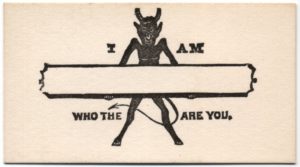Jun 11, 2015 You are seated at table number X

The escort card is a very commonplace event management tool that most of us in the industry are only all too familiar with. Serving the simple function at a more formal dining event of letting a guest know at which table they will be seated, the card is one of the last hold-outs from the analog event planning era. But how many of us have pondered the name escort card? The answer, most likely, is very few. But the origins of these little cards is surprising and slightly sordid.
In the late 1800s social conventions in the United States were quite formal following in the upper class traditions of continental Europe. Most interpersonal connection was by design and determined by social status. The idea of escorting a member of the opposite sex to any social function was fraught with protocol. But if a gentleman did not have the benefit of a good breeding or social status, how ever could he hope to make the acquaintance of a young lady – much less have the opportunity to escort her home? Enter the acquaintance card, also known as the escort card. Here was a simple card that expressed a man’s interest in a woman, often in a very light-hearted manner. Of course, an unknown gentleman escorting a woman home was sordid stuff in the 19th century, so the escort card was nowhere to be found in more formal circles.
This history makes the current use of the escort card all that more interesting. Of course, escort cards are now used in more formal situations with the function limited to seating. The humor is gone: the cards are stripped down to their functional essentials. But every time a private event employs a set of little ecru cards, they are tapping into a tradition that encompasses both the formal Old World and the brazen New.
Alan Mays has assembled a remarkable collection of these calling cards. Click here for a look at his Flickr stream.

Sorry, the comment form is closed at this time.